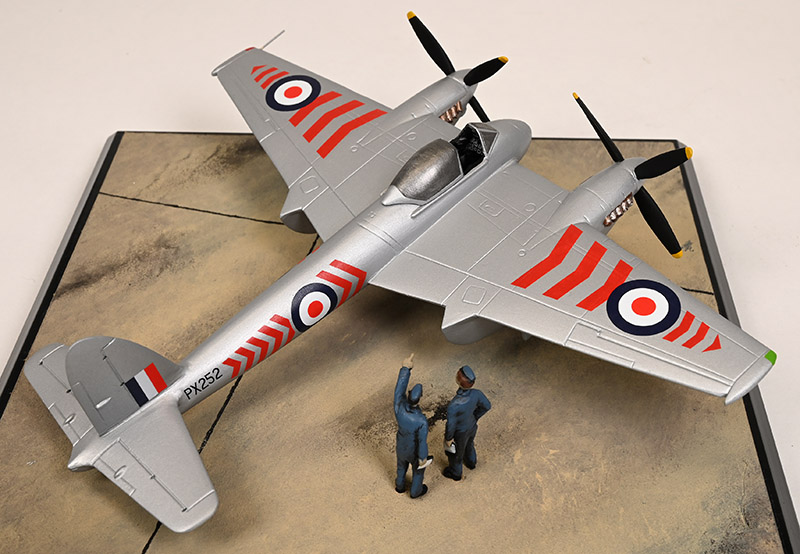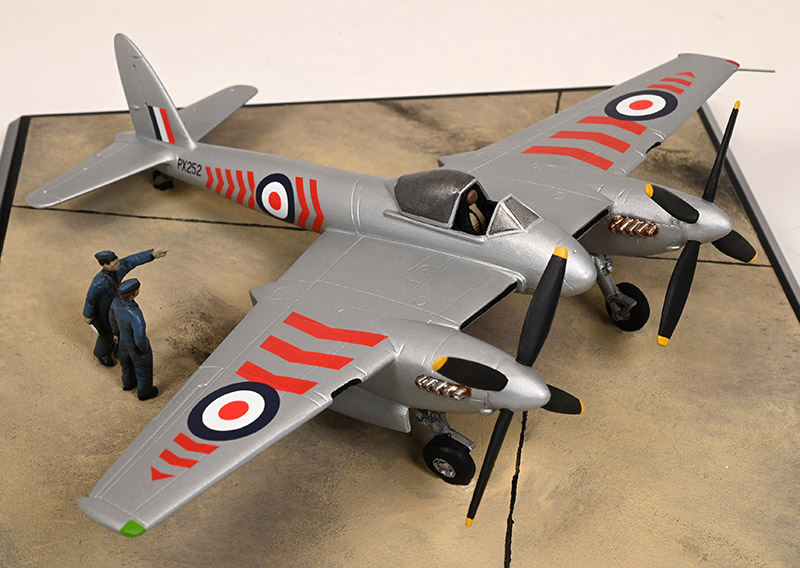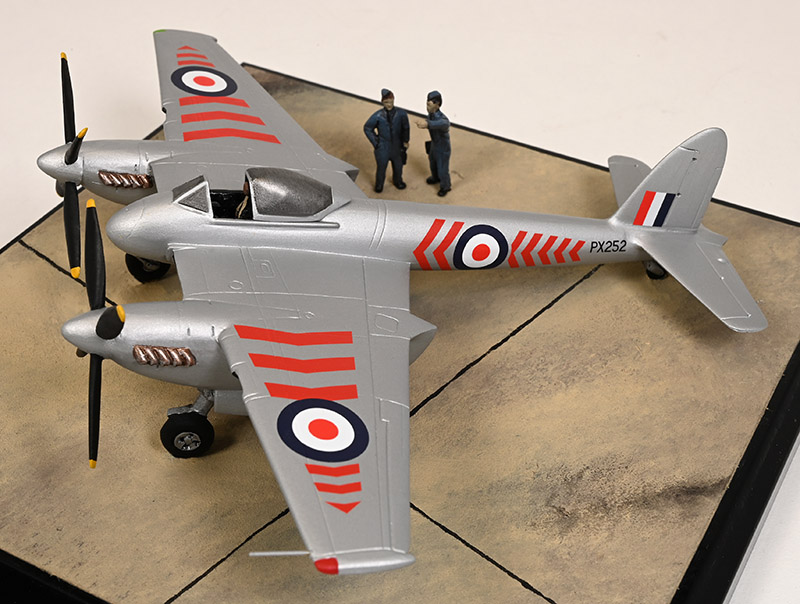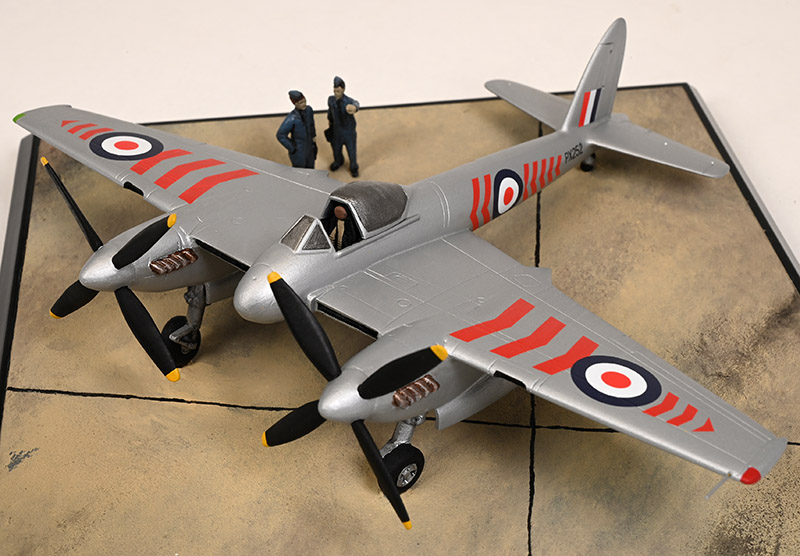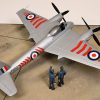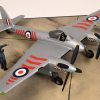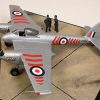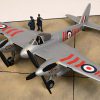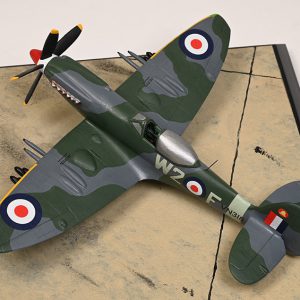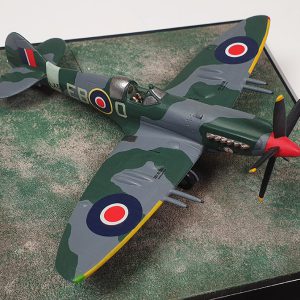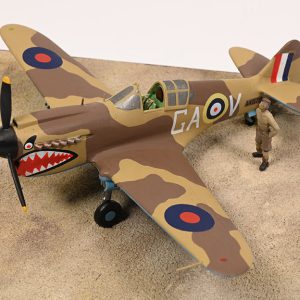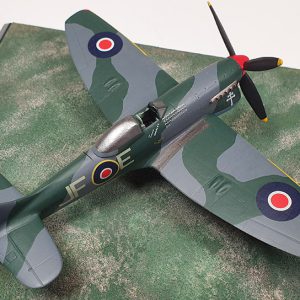De Havilland Hornet F1
PX252 65 Squadron, RAF Linton-on-Ouse, 1947
The de Havilland DH.103 Hornet is probably one of the best-looking piston-engined fighters to fly. The design built on the experience gained from the Mosquito, and with the probable need for a long-range fighter for use in an island-hopping war in the Pacific in mind. Specification F.12/43 was substantially drawn up around de Havilland’s early design studies and the first prototype de Havilland Hornet RR915 was flown on 28 July 1944. This was unarmed, but the second, de Havilland Hornet RR919, carried four 20 mm cannons. The first production order, for sixty, was placed before the end of the year and the first of these, PX210, flew from Hatfield on 1 February 1945.
Sixty Hornet F1s were built at Hatfield, all this batch with the easily-recognisable “de Havilland” fin and rudder shape; eight de Havilland Hornet PR2s, three conversions and five production aircraft followed but the proposed order for this mark was cancelled – the role was filled by PR Mosquitos – and all eight were scrapped. The main production version was the de Havilland Hornet F3; this had a larger tailplane and elevator and provision for two 200 gallon underwing tanks or a pair of 1000 lb bombs, and four rocket projectile rails. Shortly after this mark entered service a substantial dorsal fin was fitted without spoiling the aircraft’s graceful lines – or concealing its “de Havilland” heritage – and this was also retro-fitted to earlier de Havilland Hornets, sometimes by the squadrons. The last production batch was a dozen de Havilland Hornet F4s built at Chester; this required the fitting of a vertically mounted F.52 camera in the fuselage, which necessitated a slight reduction in the size of a fuselage fuel tank, and eleven Hornet F3s were modified to this configuration by Airwork at Gatwick.
de Havilland Hornet F1s equipped four UK-based Fighter Command squadrons, 64 and 65 at Linton-on-Ouse and 19 and 41 at Church Fenton (the War Plan would have had them operating as a wing from Duxford). Their principal use appears to have been for low-level interception, the so-called “rat and terrier” role. All four squadrons were re-equipped with the later mark but by the beginning of the fifties had exchanged Hornets for Meteor F4s. Some of their aircraft were then transferred to the Far East Air Force to help equip three squadrons, 33 and 45 in Malaya and 80 in Hong Kong but this programme was largely filled by new-build aircraft.
PX252 was an example of one of the sixty DH.103 F1s manufactured at Hatfield. This particular aircraft, flown by Charlton ‘˜Wag’ Haw wore an incredibly bold scheme during its time stationed at RAF Linton-on-Ouse with 65 Squadron. However the racy red chevrons attracted adverse attention and were short-lived. Their removal was ordered by the Air Officer Commanding 12 Group. PX252 also flew with 41 Squadron and 226 Operational Conversion Unit, before it crashed while overshooting at RAF Bentwaters, Suffolk, on January 8th, 1949.
Charlton ‘˜Wag’ Haw developed a taste for aviation at the early age of ten after a joy-ride in a Cobham Flying Circus bi-plane. He flew Hurricanes during the Battle of Britain and destroyed a Bf 110 fighter aircraft before being shot down himself over Bristol. Later in the war, Haw’s squadron was charged with protecting the ports of Murmansk and Archangel and teaching Soviet pilots and their ground crew to fly and maintain Hurricanes. Haw shot down two Bf 109s and was only one of four RAF pilots to be awarded the Order of Lenin. After the war, Wag remained in the RAF and served with the Central Fighter Establishment at RAF Tangmere. Between 1946-47, Haw commanded the unit and was promoted to squadron leader in 1948.


